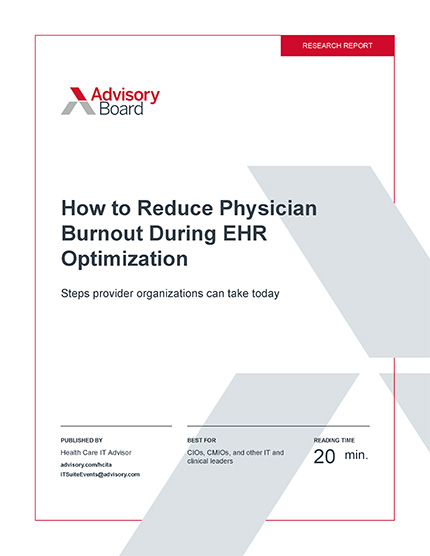Auto logout in seconds.
Continue LogoutRead Advisory Board's take: How to build your EHR to prevent medical errors
Morgan Gleason, a college student with a rare autoimmune disease, had never been pregnant. But her medical record said she'd given birth, twice, Christina Farr reports for CNBC, spotlighting an issue in the digital age of medicine that plagues millions of Americans.
Gleason's story
Since being diagnosed with Juvenile Dermatomyositis nine years ago, Gleason has seen her fair share of doctors, and, after every visit, Gleason and her mother—a health IT specialist— request a copy of Gleason's medical records to keep track of her treatment.
About two years ago, Gleason encountered an error on her record when she requested a copy from a women's health clinic in Florida. The record said that Gleason had given birth to two children, one of whom the record stated had died, Farr reports.
The note came as a surprise to Gleason, who'd never been pregnant, let alone given birth.
According to Farr, this wasn't the only time Gleason noticed inaccuracies on her record. Over the course of her treatment, her medical records have erroneously stated that she'd been diagnosed with diabetes.
She's far from alone
Gleason is one of millions of people with incorrect medical records, according to Ross Koppel, a health IT expert and sociologist and bio-informaticist at the University of Pennsylvania. Koppel said about 70% of patient medical records contain incorrect information. The majority of the mistakes aren't harmful, but some errors, like misdiagnosis or an incorrect prescription, can cause harm or lead to a patient's death, according to Farr.
In fact, more than 250,000 people in the United States die from medical errors, according to a study by Johns Hopkins University researchers, making it the third-leading cause of death in the nation.
What it takes to set the record straight
When Gleason called the doctor's office to point out the mistakes in her medical record, she was met with pushback, Farr reports. Instead of removing the error, the assistant told Gleason the information wouldn't be in the chart if Gleason hadn't said it. Gleason ultimately had to file a formal request to have her medical record changed.
This pushback isn't unusual, according to Koppel, who said doctors' offices often shirk admitting to medical errors to avoid a lawsuit. But Koppel said it's easy for clinicians to make clerical errors, especially when doctors are juggling numerous patients in back-to-back appointments.
For instance, a clinician might mistakenly copy and paste the information for one patient into another patient's medical record if they have numerous tabs open on their laptop or they could mistype the information.
Another common medical error in the United States is mistaken identity, Farr reports. Unlike other developed nations, the medical records in the United States are not linked to a patient through a unique patient identification number. As a result, it's easier for doctors to pull up the wrong patient record during appointments. Koppel said that clinicians should attach a photo of their patients to their medical records to prevent the mistake.
While the pregnancy blip is off Gleason's record, it took hours for her to fix the error, and she is still concerned that she will encounter more incorrect information on her record in the future.
"I'm worried about more errors," she said. "I hope that companies in tech don't start looking at the text in physician notes and making determinations without a human or someone who knows my medical history very well" (Farr, CNBC, 12/9; Baker, "Vitals," Axios, 12/10).
Advisory Board's take

Peter Kilbridge, Senior Research Director, Health Care IT Advisor
The concern this article presents about erroneous information in EHRs is definitely worrying and something the medical system should take seriously. Missing or inaccurate information can often be troubling for patients, a nightmare for billing, or can, in the worst case, lead to real harm. That being said, while mistakes in EHRs can certainly cause medical errors, it's important not to overlook the role that they can play in preventing them.
“Three times as many physicians said their EHR prevented a potential medication error than said it caused one.”
Indeed, evidence has consistently indicated that EHR adoption is associated with a reduction in medical errors. With some errors, this shift is often automatic. That is, simply having an EHR system in place typically lowers the hospital's rate of medical errors and reduces the number of adverse drug events. A study from Carnegie Mellon found that EHR implementation in Pennsylvania hospitals produced an average 27% reduction in negative patient safety events, 30% decline in negative medication events and 25% decrease in complications regarding tests, treatments, or procedures. And clinicians largely share this view: In a NAMCS physician workflow survey, three times as many physicians said that their EHR prevented a potential medication error than said it caused one.
However, with other metrics, such as overall mortality, the impact of EHRs can be more mixed. For instance, a recent Health Affairs study that looked at Medicare claims from a sample of 3,249 hospitals found that initial EHR adoption actually increased 30-day mortality in the short-term, before it fell significantly as the system matured. This reduction was also linked to greater use of the EHR's features.
“But just adopting an EHR system is not enough to improve outcomes”
This suggests that, for certain outcome measures, just adopting an EHR system is not enough to improve outcomes. Rather, to truly improve safety, leaders must carefully select the functions they want to use and match them to the unique operations and systems of their organization.
We've found that some of the most crucial aspects of these systems are those that hardwire better communication, improve efficiency, help care coordination, reduce unnecessary care variation and, above all, advance accuracy. The functions that can have the greatest impact are those that advance these goals, like computerized practitioner order entry (CPOE) and standardized electronic order sets.
Reduce hospital mortality with the help of an EHR
To learn more about these essential components and why they matter—as well as to read six selected case studies of organizations that were able to achieve implementation success—read our research report on Reducing Hospital Mortality with the Help of an EHR.
Don't miss out on the latest Advisory Board insights
Create your free account to access 1 resource, including the latest research and webinars.
Want access without creating an account?
You have 1 free members-only resource remaining this month.
1 free members-only resources remaining
1 free members-only resources remaining
You've reached your limit of free insights
Become a member to access all of Advisory Board's resources, events, and experts
Never miss out on the latest innovative health care content tailored to you.
Benefits include:
You've reached your limit of free insights
Become a member to access all of Advisory Board's resources, events, and experts
Never miss out on the latest innovative health care content tailored to you.
Benefits include:
This content is available through your Curated Research partnership with Advisory Board. Click on ‘view this resource’ to read the full piece
Email ask@advisory.com to learn more
Click on ‘Become a Member’ to learn about the benefits of a Full-Access partnership with Advisory Board
Never miss out on the latest innovative health care content tailored to you.
Benefits Include:
This is for members only. Learn more.
Click on ‘Become a Member’ to learn about the benefits of a Full-Access partnership with Advisory Board
Never miss out on the latest innovative health care content tailored to you.

